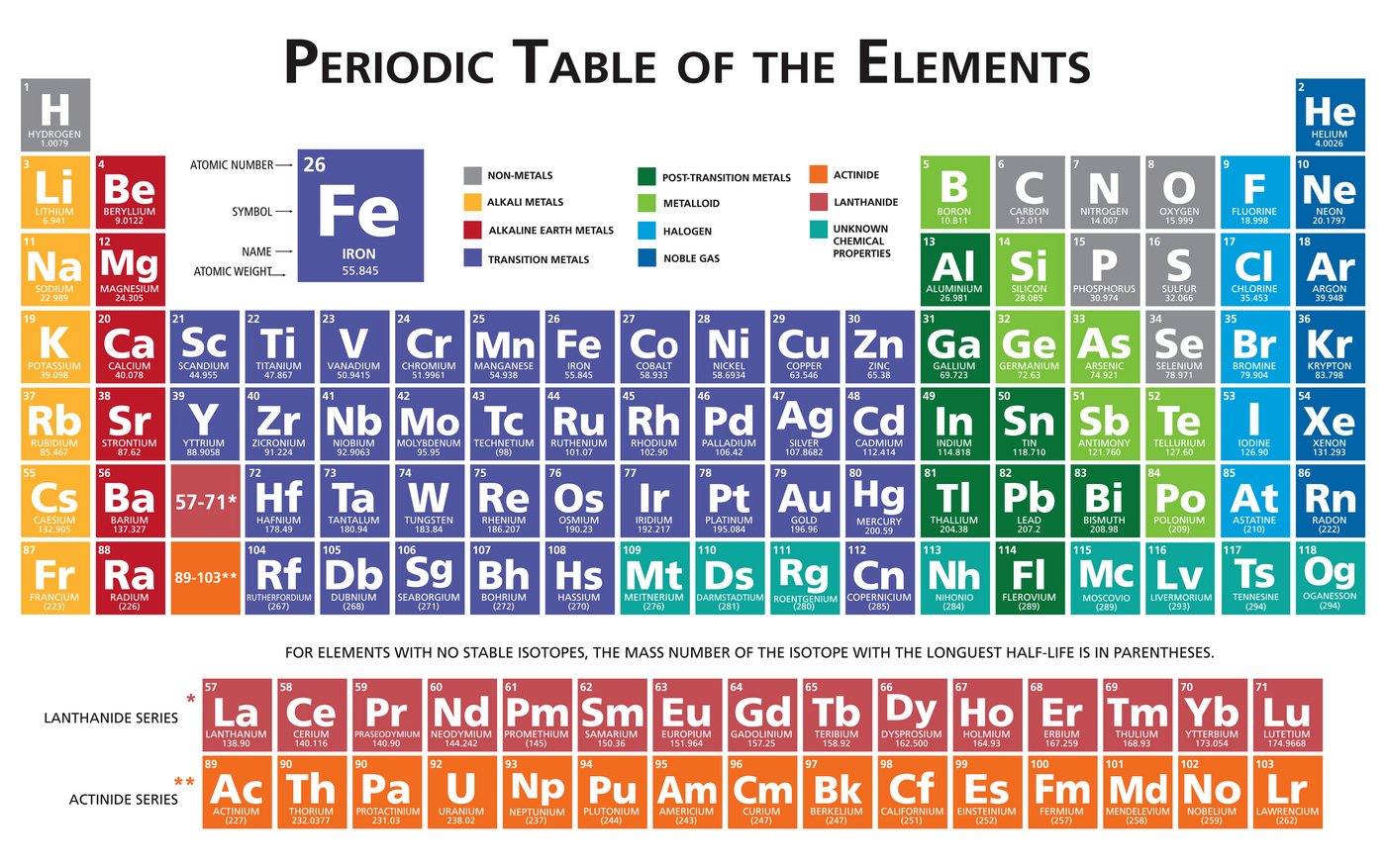The foundations of reality: The quantum world and its open questions
Mark Harris
The United Nations has declared that 2025 is to be the International Year of Quantum Science and Technology. The quantum merits such global attention and prestige because of the astonishing success of quantum science.
1. Quantum ubiquity
Modern quantum theory, quantum physics and quantum technology all flow from the success of Quantum Mechanics (QM). QM is the basic mathematical formalism which was developed in the 1920s and 30s to interpret (what were then) new experimental discoveries concerning light and matter at the atomic and sub-atomic level. QM has inspired many further advances over many further length scales in nature, from the relativistic theory of the electron enshrined in Quantum Electrodynamics to the quantum theory of solids, from the Standard Model of particle physics to contemporary developments in cosmology such as quantum gravity.
More impressive still, QM is at the heart of a broad conceptual framework which underpins the entire landscape of the natural sciences, and which continues to inspire new research initiatives across the sciences. Without the quantum framework we would have only a scant grasp of how matter on the molecular, atomic and subatomic scales behaves and is composed. And on the macroscopic scale – pre-eminently the scale of human experience – quantum physics explains many of the basic properties of our everyday world that we take for granted – properties such as colour and solidity – while it also provides the basic science for entire industries, most obviously electronics and telecommunications. On a larger scale still, quantum theory provides the explanation for why stars shine, and the distribution of galaxies in space. Finally, QM underpins what is perhaps the greatest of all scientific discoveries: the periodic table of elements. In short, quantum science is ubiquitous in the natural sciences and technology, and it explains the physical properties of many of the daily features of our lives. QM is surely at the foundations of reality, one might think. But if so, why is QM so notoriously difficult to interpret?

2. Quantum fundamentalism
QM makes famously strange predictions which, taken literally, suggest that nature is equally strange, at least when judged by the standards of our human common sense. Einstein, for one, could not accept the quantum property we now know as ‘entanglement’ – where two particles can be inextricably linked even over stupendous distances – believing that QM must be incomplete or incorrect, on this score at least. And yet, rigorous experimental tests to date have borne the quantum predictions out in full. Also, despite its widespread popular association with uncertainty, indeterminism and probabilistic predictions, QM is capable of providing stunning precision in practical terms. In one renowned case (the magnetic moment of the electron), theoretical calculations agree with experiment to better than 1 part in 1012 (Fan et al. 2023). It is hardly surprising that many physicists believe physical reality to be fundamentally quantum in nature, a viewpoint that has come to be known as ‘quantum fundamentalism’.
Quantum fundamentalism is commonplace in textbooks and popular science, although it is not often referred to in so many terms. Here, for instance, is how one of the standard introductory student texts on QM begins (Cohen-Tannoudji et al. 2020, 23-24):
In the present state of scientific knowledge, quantum mechanics plays a fundamental role in the description and understanding of natural phenomena. In fact, phenomena that occur on a very small (atomic or subatomic) scale cannot be explained outside the framework of quantum physics…Actually, there are many phenomena that reveal, on a macroscopic scale, the quantum behaviour of nature. It is in this sense that it can be said that quantum mechanics is the basis of our present understanding of all natural phenomena, including those traditionally treated in chemistry, biology, etc...
QM is the basis of our present understanding of all natural phenomena, they say, extending even into the macroscopic regime. As Philip Anderson, the great theorist of condensed-matter physics (that is, the physics of matter on many length scales beyond the sub-atomic), put it so memorably: ‘We [humans] are quantum all the way up’ (Anderson 2001, 500). Such is the core conviction of quantum fundamentalism, a conviction which is widespread in modern physics and the popular science literature.
Strangely, the terminology of quantum fundamentalism has only been coined quite recently, and mainly in the field of quantum foundations, which specialises in the deep philosophical problems of the quantum world. Philosopher of science, Henrik Zinkernagel (2016, 2; cf. Faye 2019; Zinkernagel 2011, 235), offers a definition:
Quantum Fundamentalism. Everything in the universe (if not the universe as a whole) is fundamentally of a quantum nature and ultimately describable in quantum-mechanical terms.
Everything in the universe is quantum in its very being, and ultimately (that is, in principle) everything can be described scientifically in such terms, explains Zinkernagel. If quantum fundamentalism is to be believed, the quantum is here to stay.

If quantum fundamentalism is to be believed, it has the capacity to form a complete worldview, which extrapolates from the underlying science to other areas of human experience. In that sense quantum fundamentalism bears similarities with a much better-known scientific worldview – Copernicanism – although without Copernicanism’s venerability or ‘obviousness’ today. Copernicanism was certainly not ‘obvious’ just a few hundred years ago, but only became established in the face of intense debate, much of which was philosophical and theological. Copernicanism is taken so much for granted today that we forget it had a profound impact on human self-understanding in early modern Europe; the debates were by no means just about the science. Quantum fundamentalism therefore has important existential, theological and ethical implications which are largely still unexplored by scholars, although our group in Oxford’s Ian Ramsey Centre in Science and Religion has recently made a start.
Quantum fundamentalism has one outstanding problem as a worldview, though, which is that it is metaphysically under-determined: there are numerous conceptual (metaphysical) interpretations of the quantum framework, but they are largely equivalent in empirical terms. In other words, the science cannot help us to decide between them, even if we are convinced that the universe is fundamentally quantum in nature. Moreover, the interpretations conflict and contradict each other in many basic ontological ways. We might suppose (hope) that one of them is correct, but we don’t know which on scientific grounds. For instance, the famous Copenhagen interpretation has a decidedly antirealist tendency to emphasise the observer’s role in constructing reality: QM tells us what we might expect when we perform certain kinds of observation but we should not rely on it as a guide to un-observed reality. Hugh Everett’s Many Worlds Interpretation, on the other hand, is fully realist: the observer exists in a fully-determined quantum world which really exists on every length scale, but there are simultaneously other alternative worlds which contain the same observer making different observations. Clearly, these two interpretations are worlds (!) apart, but they are both fully compatible with the empirical science, even if they are totally incompatible with each other on metaphysical grounds.
There are, however, other ways of adjudicating between the interpretations: non-scientific ways. Foremost among these are religious concerns, and they are foremost because of their sheer popularity in wider culture.

3. Quantum religion
Quantum fundamentalism is not an explicitly religious viewpoint, but it has religious implications. In everyday use, a ‘fundamentalism’ is an uncompromising religious stance which is often hostile towards (or at least suspicious of) modern scientific theories. It is surprising, therefore, to see the term in a scientific setting, and with no negative connotations intended. There are, however, parallels with religious belief insofar as quantum fundamentalism is a widespread but untestable conviction among scientists which has the capacity to form a worldview, as I suggested above. Also, quantum fundamentalism exerts a powerful pull on the modern religious imagination, to such an extent that we might even speak of ‘quantum religion’ as a cultural movement, quite apart from the questions that QM raises for theological views of nature and supernature.
Interest in quantum fundamentalism from religious commentators and theologians is striking. Christian theologians, for instance, have found that QM is a rich source of metaphor for models of God’s activity in the world and God’s relationship with the natural order, for Christological mysteries, and even for that deep enigma of Christian thought: the nature of God’s Trinitarian being. Characteristic features of QM – wave/particle duality, indeterminacy, and entanglement – crop up repeatedly in these theological metaphors. Not only do these quantum features offer stunning analogies for theological doctrines, but they allow the contemporary theologian to retrieve traditional categories of God’s presence and providence in the world, categories which the rigidly mechanical pictures of classical physics seemed to have precluded for good, until the quantum came along.
Many other religious thinkers have appropriated QM enthusiastically in support of ancient spiritual worldviews, especially from Hinduism, Buddhism and Daoism. This borrowing results in what is frequently referred to as a synthetic ‘quantum mysticism’, which downplays the material world in favour of mind, consciousness, and the deep unity of all things. Quantum mysticism has been popular in New Age spirituality, for instance, and it has percolated far and wide into health and lifestyle consultancy, coaching, and alternative medicine.
It is telling that these moves in quantum religion tend to presuppose a version of the Copenhagen interpretation. For the Christian theologians – especially those keen to establish a mechanism for God’s action in the world through QM – Copenhagen’s emphasis on quantum indeterminacy is attractive, especially if we assume that the indeterminacy is a fundamental property of nature itself: a fuzziness at the heart of reality. If so, then nature is no longer a closed causal barrier to God’s action in the world – as Newtonian physics was often taken to suggest – but rather is open to supernatural influence. In other words, God’s action takes place through the fundamental quantum openness of the universe. Likewise, those who seek to establish human free will against deterministic views of mental processes can lay similar claim to the quantum indeterminacy of the Copenhagen interpretation. Quantum indeterminacy is said to affirm human free will, in this view. As I mentioned at the end of the previous section, non-scientific preferences are being employed in order to adjudicate between the different (and empirically equivalent) quantum interpretations. Here, a clear preference is being displayed for the Copenhagen interpretation over others, and for a particular kind of Copenhagen interpretation at that. For, it should be remembered that there are other ways of interpreting Copenhagen indeterminacy: it need not arise from a basic blurriness/openness in the ontology of nature so much as a limitation in our own ability to see the deep processes in themselves. While the former indeterminacy is ontological the latter is epistemic, but both are compatible with the Copenhagen interpretation, broadly construed.
Religious thinkers who claim that QM supports idealist views of nature and supernature – where mind (and Mind) are pre-eminent in determining reality – also tend to adhere to the Copenhagen interpretation. Here, it is not so much Copenhagen indeterminacy which is attractive so much as its emphasis on the observer’s crucial role in determining reality. For it is this role which allows for a subjective component to reality to be foregrounded. What is going on in these approaches is that the quantum formalism is being interpreted in terms of the observer’s state of knowledge of the quantum system under investigation, to such an extent that the human mind is the decisive factor in the determination of matter. Some notable theoretical physicists in the history of QM adhered to idealist views. Sir Arthur Eddington, for instance, in the early years of QM, claimed that the basic stuff of the universe is ‘Mind-stuff’ (Eddington, 1929: 276-82), while several decades later Eugene Wigner invoked Cartesian mind-body dualism to claim that the observer’s mind/consciousness is the central decisive element in the appearance of ‘reality’ in a quantum measurement. And although idealist readings of QM are not widespread in physics today, they are not entirely absent (e.g. Stapp, 2011), and they maintain a massive degree of support in popular forms of quantum religion such as quantum mysticism.
Against these religiously-inflected forms of the Copenhagen interpretation it should not be forgotten that there are other conceptual interpretations of QM beyond Copenhagen, equally compatible with the empirical observations of quantum science. The most important such interpretations tend to be realist, such as Everett’s Many Worlds interpretation. Realist interpretations tend to be popular among philosophers working in the quantum foundations field – such as the Many Worlds interpretation among Oxford philosophers (the ‘Oxford Everettians’) – but they raise so many deep challenges on a human level that they have gained little traction in wider culture, nor in quantum religion. This lack of popular support for the realist interpretations is hardly surprising, since they work with ontologies that conflict strongly with the everyday world of human experience. Antirealist/idealist interpretations, on the other hand, do not present such stark challenges and are more straightforward to grasp on a human level, especially for those religious believers who are already predisposed to uphold the pre-eminence of mind and consciousness.
4. Conclusions
My point has been to demonstrate that, in spite of the unrivalled scientific power of QM – to the extent that enormous numbers of scientists worldwide subscribe to some kind of quantum fundamentalism – there are still many open questions about our quantum universe, questions which the science is quite unable to answer. These open questions concern the foundations of reality – what is nature really like? – and the science is unable to answer such questions because the conceptual interpretations of QM are metaphysically under-determined, incompatible and conflicting. In the face of so much confusion and uncertainty then, deep and ancient religious wisdoms provide powerful reasons to decide on this or that interpretation against others. But it must be remembered that such decisions are made on the basis of our human worldview and subjective predispositions, even if those predispositions arise from ancient wisdom. Anyone who makes a theological claim which begins ‘Quantum Mechanics tells us…’ is almost certainly over-reaching from the science and mis-interpreting it, possibly wildly. Not for nothing do physicists widely disparage religious appropriations of QM as ‘pseudoscience’. And yet, it seems inescapable that our universe is quantum in nature. Quite what that means theologically is still an open question.
Mark Harris
Published November 2024
Mark Harris is Andreas Idreos Professor of Science and Religion at the University of Oxford, a professorial fellow of Harris Manchester College, and Director of the Ian Ramsey Centre in Science and Religion. He has trained in both physics and theology and is currently developing a new research project on the theological and religious implications of quantum physics.
Bibliography
Anderson, Philip W. 2001. “Reply to Cartwright.” Studies in History and Philosophy of Modern Physics 32 (3) 499-500.
Cohen-Tannoudji, Claude, Bernard Diu and Franck Laloë. 2020. Quantum Mechanics. Volume I: Basic Concepts, Tools, and Applications. Second Edition. Weinheim: Wiley-VCH.
Eddington, A. 1929. The Nature of the Physical World. Cambridge: Cambridge University Press.
Fan, X., T. G. Myers, B. A. D. Sukra, and G. Gabrielse. 2023. “Measurement of the Electron Magnetic Moment.” Physical Review Letters 130, 071801.
Faye, Jan. 2019. “Copenhagen Interpretation of Quantum Mechanics.” https://plato.stanford.edu/archives/win2019/entries/qm-copenhagen/ (accessed 21 June 2024).
Stapp, H. 2011. Mindful Universe: Quantum Mechanics and the Participating Observer, 2nd edn, Berlin, Heidelberg: Springer.
Zinkernagel, Henrik. 2011. “Some Trends in the Philosophy of Physics.” Theoria 26:215–41.
Zinkernagel, Henrik. 2016. “Are We Living in a Quantum World? Bohr and Quantum Fundamentalism.” Eprint arXiv:1603.00342 (accessed on 21 June 2024).
Picture Credits
Vibrant 3D visualization of quantum field theory illustrating energy fluctuations and particle interactions (c) Adobe Stocks #984075162 von smartart
Periodic table of the chemical elements illustration (c) Adobe Stocks #313115895 Von juliedeshaies
Quantum computing in action qubits processing data at unimaginable speeds (c) Adobe Stocks #740879819 Von Ai-Pixel
Photon interference and wave patterns, quantum dynamics, subatomic light interaction (c) Adobe Stocks #909429071 Von SITTAKAN











